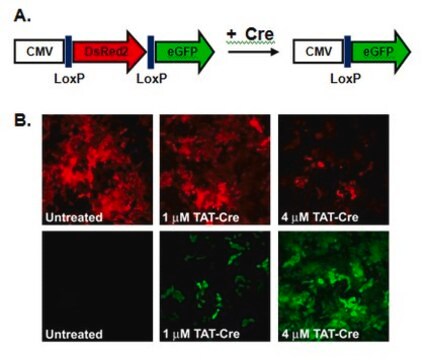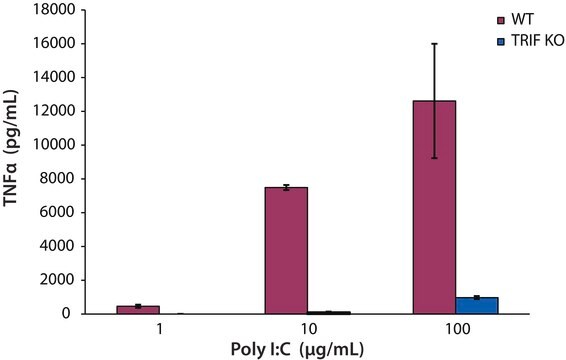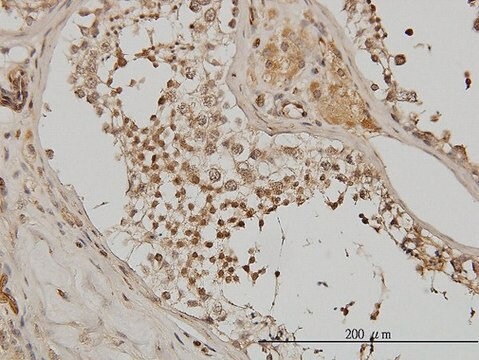MAB3120
Anti-Cre Recombinase Antibody, clone 2D8
ascites fluid, clone 2D8, Chemicon®
Synonim(y):
Przeciwciało anty-Cre
About This Item
Polecane produkty
pochodzenie biologiczne
mouse
Poziom jakości
forma przeciwciała
ascites fluid
rodzaj przeciwciała
primary antibodies
klon
2D8, monoclonal
reaktywność gatunkowa (przewidywana na podstawie homologii)
all
producent / nazwa handlowa
Chemicon®
metody
ELISA: suitable
immunocytochemistry: suitable
immunofluorescence: suitable
immunohistochemistry: suitable
western blot: suitable
izotyp
IgG1κ
numer dostępu UniProt
Warunki transportu
dry ice
docelowa modyfikacja potranslacyjna
unmodified
informacje o genach
Escherichia coli ... Cre(2777477)
Opis ogólny
Specyficzność
Immunogen
Zastosowanie
Epigenetics & Nuclear Function
Cell Cycle, DNA Replication & Repair
A 1:500-1:5,000 dilution was used in a previous lot. Natural Cre recombinase from Bacteriophage P1 migrates at 38.5 kDa by SDS-PAGE.
Immunofluorescence:
A previous lot of this antibody was used on IF.
Immunohistochemistry:
A 1:500-1:5,000 dilution of a previous lot was used in IH.
ELISA:
A 1:500-1:5,000 dilution of a previous lot was used in ELISA.
Optimal working dilutions must be determined by the end user.
Opis wartości docelowych
Postać fizyczna
Przechowywanie i stabilność
Komentarz do analizy
HeLa Nuclear Extract
Informacje prawne
Oświadczenie o zrzeczeniu się odpowiedzialności
Nie możesz znaleźć właściwego produktu?
Wypróbuj nasz Narzędzie selektora produktów.
Kod klasy składowania
10 - Combustible liquids
Klasa zagrożenia wodnego (WGK)
WGK 1
Temperatura zapłonu (°F)
Not applicable
Temperatura zapłonu (°C)
Not applicable
Certyfikaty analizy (CoA)
Poszukaj Certyfikaty analizy (CoA), wpisując numer partii/serii produktów. Numery serii i partii można znaleźć na etykiecie produktu po słowach „seria” lub „partia”.
Masz już ten produkt?
Dokumenty związane z niedawno zakupionymi produktami zostały zamieszczone w Bibliotece dokumentów.
Nasz zespół naukowców ma doświadczenie we wszystkich obszarach badań, w tym w naukach przyrodniczych, materiałoznawstwie, syntezie chemicznej, chromatografii, analityce i wielu innych dziedzinach.
Skontaktuj się z zespołem ds. pomocy technicznej







![Anti-CD62E [ELAM-1] Antibody, clone 1.2B6 clone 1.2B6, from mouse](/deepweb/assets/sigmaaldrich/product/images/224/939/8a711839-25ef-4e45-badd-208503950c8a/640/8a711839-25ef-4e45-badd-208503950c8a.jpg)
